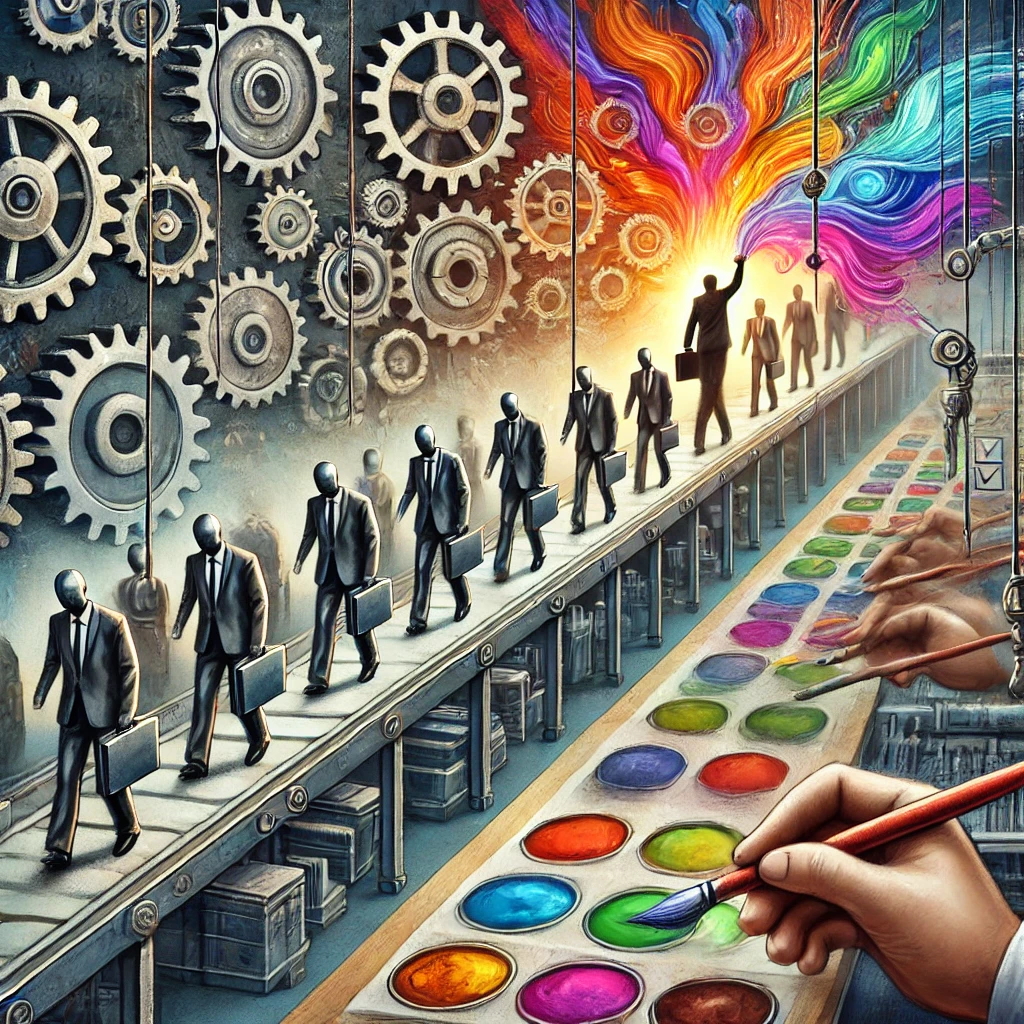It doesn’t matter where you go, who you are talking to, or what you are talking about – somehow, someway, AI (artificial intelligence) creeps, or more often, comes screaming into the conversation and takes over.
What is it?
How do you use it?
Will it at least send me a condolence card when it takes over my job? (The answer is yes, if you program it to.)
So many questions, from just about all walks of life. And know that NOBODY has all the answers. But, true to TCA\’s way, as continuous students and always looking to learn so that we can best advise our clients, I thought I would take a swipe at answering these, and other questions, as well as provide a bit of (much-needed) perspective to try and calm some of the hysteria we’re hearing from industry colleagues, our clients, and random people in airports.
Let’s level set.
When we talk about generative AI, there are SOOOO many different facets that we as marketers, content creators, and leaders, need to be aware of – text, video, graphics, audio, and then how those can be applied to marketing, sales, writing, customer support. The permutations are infinite. But first, we need to understand what it is, what it isn’t, how it works, and why we shouldn’t be shaking in our boots about it.
What the heck is Generative AI?
Generative AI is a type of artificial intelligence that uses machine learning algorithms to generate new output (text, video, image, music, etc.) by reassembling the original source data. In other words, it is a technology that can take what it has learned from the content it\’s been shown in pretty much any form and create something entirely new based on that information. This is achieved through a process called generative modeling, where a model is trained on a set of data – by asking questions, giving it a command, or specifically programming it – and then that is used to generate the new output.
Generative AI or Intelligent Automation is also a great tool to use to automate repetitive tasks as well as create and optimize content based on specific goals and parameters. It can support data analysis, customer service, and other tasks that require repetitive actions.
The big takeaway: Generative AI is ITERATIVE – in that, the AI tool, whichever one it is, is generating (versus creating) new outputs from existing content and resources. It is not coming up with an idea and creating something that is or has net new information. This is why it won’t take your job.
Is Generative AI a new thing?
The first neural network (read: early Generative AI) was developed in the 1940s, but it was not until the 1980s that generative models really took hold. In the 1990s, a new technique called Variational Autoencoder (VAE) was introduced, which improved the quality of generated data. Since then, generative models have been used in various applications, including speech synthesis, music generation, and image synthesis.
The big takeaway: While new ways to use Generative AI are coming to light what seems like daily, it’s been in use in content creation, publications, etc. for a long time and yet companies are hiring more content creators and marketers than ever before. This is why it won’t take your job.
How does Generative AI work?
Generative AI works by using machine learning algorithms (computer brain) to analyze and learn from existing data sets. Data set = content, all and any kind of content – words, music, video, photos, spreadsheets, graphs, charts, cat images. You name it, if it can be accessed by the algorithm, it can be used. The AI machine/tool/app then uses this knowledge to generate a different version of the consumed content that meets specific criteria prompted/asked for. For example, a marketer might prompt a generative AI tool to write personalized product descriptions for its new line of dog collars or create a fun and wacky email subject line that would be interesting and tailored to a specific customer segment.
Generative AI works by training a computer model on a dataset and then using it to iterate a new presentation of that data. The model is trained using a process called backpropagation, where the error between the generated data and the original data is minimized. There are several types of generative models, including Generative Adversarial Networks (GANs), Variation Autocoders (VAEs), and Autoregressive models.
- GANs are a type of generative model that use two neural networks, a generator network, and a discriminator network. The generator network creates new data, while the discriminator network evaluates the quality of the generated data. The two networks compete against each other until the generator produces data that is indistinguishable from the original data.
- VAEs are another type of generative model that uses an encoder network to map the original data to a lower-dimensional space, called the latent space. The decoder network then uses this latent space representation to generate new data. This approach allows for the creation of new data that is similar to the original data, but not an exact replica.
- Autoregressive models are a type of generative model that generates new data by predicting the next value based on the previous values. Autoregressive modeling uses only past data to predict future behavior. This approach is commonly used in text generation and speech synthesis.
The big takeaway: Generative AI can (should) be used to automate repetitive tasks such as data entry, report generation, and social media posting. This saves time, allowing us to focus on more strategic tasks the technology is not capable of. This is why it won’t take your job.
How can it help me do my job better (not do my job for me)
As marketers and content creators, we are always on the lookout for ways to deliver better experiences. So too should we be focused on improving processes that help deliver better results. Enter AI. But you may be worried that this new technology will replace your job. Fear not, because generative AI is not here to take your job – it\’s here to enhance it.
There is a gazillion, well, maybe not a gazillion, but lots of ways marketers and content gurus can leverage Generative AI.
- Content Creation
Generative AI can help marketers create new, unique content that\’s tailored to their audience\’s interests. It can be used to create blog posts, social media content, product descriptions, and more. This can save marketers time and ensure that their content is always fresh and engaging. - Personalization
Generative AI can be used to create personalized content and offers that are tailored to each customer\’s interests. For example, it can be used to create personalized email subject lines, product recommendations, and social media posts. This can improve customer engagement and increase conversions. - Automation
Generative AI can automate repetitive tasks such as data entry, report generation, and social media posting. This can save marketers time and allow them to focus on more strategic tasks. - Optimization
Generative AI can be used to optimize marketing campaigns based on specific goals and parameters. For example, it can be used to create A/B tests that automatically optimize email subject lines, ad copy, and landing pages. This can improve conversion rates and reduce costs.
So I get it, change is scary.
We\’ve all been through more than our fair share of painful, sometimes traumatic, technology adoption cycles, most of which dangled the promise of more time and easier work processes at the end, to be more than a little dubious and nervous about yet another tool. Especially a tech so powerful and promising that broke onto the scene to everyone, everywhere, all at once, with so many applications across all industries. But remember, with that comes the opportunity for us to harness this power.
And keep in mind, humans built these machines. And they rely on us to feed it amazing, original content because it cannot produce original thinking. Anything they produce is just iterations of what you, or me, or one of our other amazing marketing and content compatriots have created.
So, until HAL or Ultron are a reality and are working collaboratively in a marketing department somewhere, our job is to learn how to leverage these tools to work smarter, giving us more time for creative innovation – something AI can’t do.





